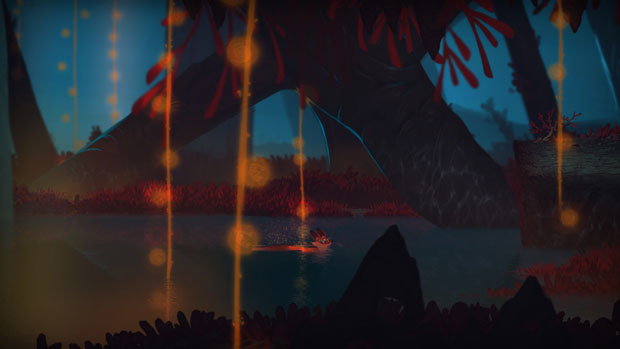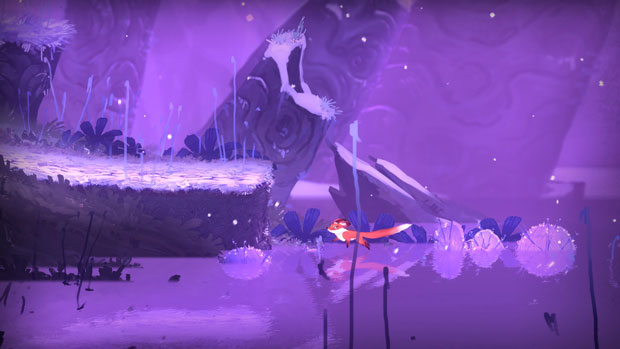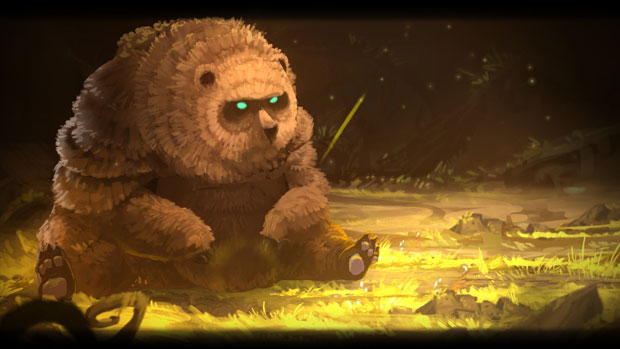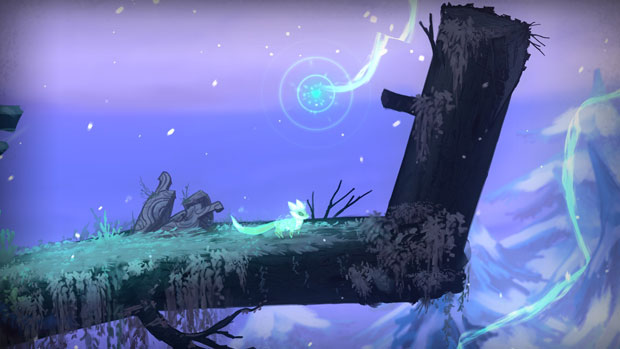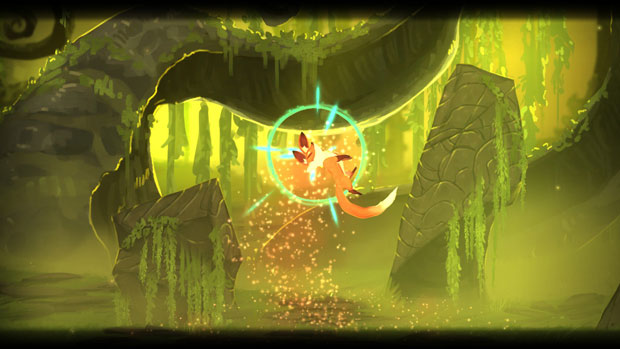Wot I Think: Seasons After Fall
Spring forward, fall back
Seasons After Fall [official site] is Swing Swing Submarine's addition to the slowly-expanding subgenre of platformers which feature foxes and charming artwork. Here you play as a spirit controlling a fox as you attempt to harness the power of the seasons at the bidding of a mysterious character. The main point of difference between Seasons After Fall and other pretty platformers is that you get to switch between seasons you've unlocked at will, which then changes elements of the puzzles. Here's Wot I Think:
First and foremost, Seasons After Fall looks charming. The art style is lovely, and the animation when the fox makes a jump that's at the edge of its range is a kind of scramble crossed with a wriggle as it climbs from the edge onto the platform proper. The colour palettes and effect for each season are really pleasant – winter is whites and blues and purples with snow, autumn is oranges and reds and browns and mushrooms and gusts of wind, and so on.
This is where the game excels.
What Seasons After Fall does with it is tell a gentle story. It's something you might read a slightly older child – say five years old – as a bedtime story. The themes are patience, respect for living things, the progress of life over seasons… There's that uncomplicated nature–centric spirituality which ties in with those themes.
In terms of play, it's a Metroidvania-style platformer. Through acquiring access to different seasons you'll be able to use various parts of the environment in different ways and gain access to more of the map, returning to the Sanctuary (the middle hub bit and the heart of the forest) between each of the main sections.
At first (after a bit of prologue stuff where you blob about as a glowing orb) you're heading off to pick up the essences of the four seasons in order that the character who is directing you through voiceovers might use them for something. But after that the story changes a little, and thus you're presented with slightly more complex puzzles and revisit those earlier areas of the forest to find what they now hide. Like I say, Metroidvania.
In terms of the puzzles and how the seasons work, one example is that once you've got access to autumn you can switch to it to ensure mushrooms open out and become platforms, offering access to higher ledges. When it's winter the water freezes solid meaning little fountains become climbable ice towers. Summer means you can use little plant pods which have ripened into big round bouncy cushions and let you catapult to other bits of the map. Spring is rainy and lets you raise the height of those aforementioned fountains, and so on and so on.
The experience changed over the course of playing – sometimes for the better, sometimes for the worse. Certainly, at first I found the game irritating in its simplicity. It was lovely to look at but I felt like I was playing a game aimed at a far younger player. The thought I kept returning to was that it was like Ori And The Blind Forest but on all fronts Ori was the more appealing game – harder, more mechanically robust, more interesting – so maybe this was the Ori-type game for someone who wanted that charm but didn't have the dexterity or the patience for some of Ori's more irritating sections. I mean, I never ragequit Seasons After Fall.
For a lot of that early game the whole endeavour seemed like a very generic platformer wearing very pretty clothes and I found it became boring pretty quickly. If I hadn't been reviewing it I would have stopped playing at that point, or maybe waited until I was babysitting a child of around the right age/interests to see how they got on with it.
Persevering revealed a slight uptick in terms of interest. The story changed slightly and, while remaining gentle and rather generic, become more engaging. Rather than being bored I switched into a more relaxed headspace, letting the game kind of wash over me and getting into more of a rhythm with swapping seasons either in response to the demands of a puzzle or just because I fancied a different background for my jumping and running.
I started to feel quite fond of the game in its quiet, gentle way. It was nice to be in the space, even if it wasn't reinventing the wheel, and nice to listen to the sounds and see the little world of this fox and these Guardians.
From that point onward it started to go between that fond calmness and a sense of frustration. It's not a difficult game by any stretch of the imagination, but it seemed really bad at telling me where I needed to go. Towards the end, when I'd already visited the different areas and was revisiting them to uncover late-game bits and pieces I would find myself at a bit of a loss in terms of where I was and where I was heading. Partly I think that's because the simplicity means several sections look a lot like other sections. I'd get turned around because some trees looked like other trees or I couldn't remember which platform led where because they looked a lot like another set.
In one section there didn't seem to be any markers that would reveal where I was headed and no commentary kicked in as a prompt so I only found what I was looking for by exhausting the options. That's not much fun.
The game also does that thing where you complete an objective in one section and then have to return to the hub, but that's a journey you need to make yourself rather than the game doing anything like depositing you back in that area or giving you an easy recall. It's a small thing but it did start to grate as it felt like wasted time since there was nothing of interest to see or do on those return journeys. The game also sometimes lets you open shortcuts but when it shows you these unfurling as a cutscene it's not often clear where they actually are or whether you should use them to progress or as an easier route back. It's little lacks in terms of clarity that really start to grate and introduce that note of frustration to the experience. Sand in your bathing suit.
A couple of the later puzzles are engaging, shifting out of the realm of basic season switching for immediate access to a thing – there's a set involving a string of fireflies which I thought was really neat – but they're a rarity and the rest are less about challenging the player and more about just swapping the seasons every now and again, adding a bit of visual variety and gating/varying the journeys.
Overall I'd say it was a pretty experience – pretty to look at, pretty gentle and pretty generic. There's a place for that, especially if you're in the mood for a relaxing game where you don't need to force yourself through punishing boss fights or sneak off and look up a walkthrough because a puzzle is ruining your evening. But with that relaxation aspect in mind the minor irritations did rear their heads occasionally and get in the way. It's also incredibly slow to build so you might decide it's too easy or unengaging before you get to a point where you're relaxing.
Ultimately, it's competent, but without the systems or story being on the same level as the aesthetic Seasons After Fall will soon fade from memory.
Seasons After Fall is out now for Windows, and is available on Steam.

